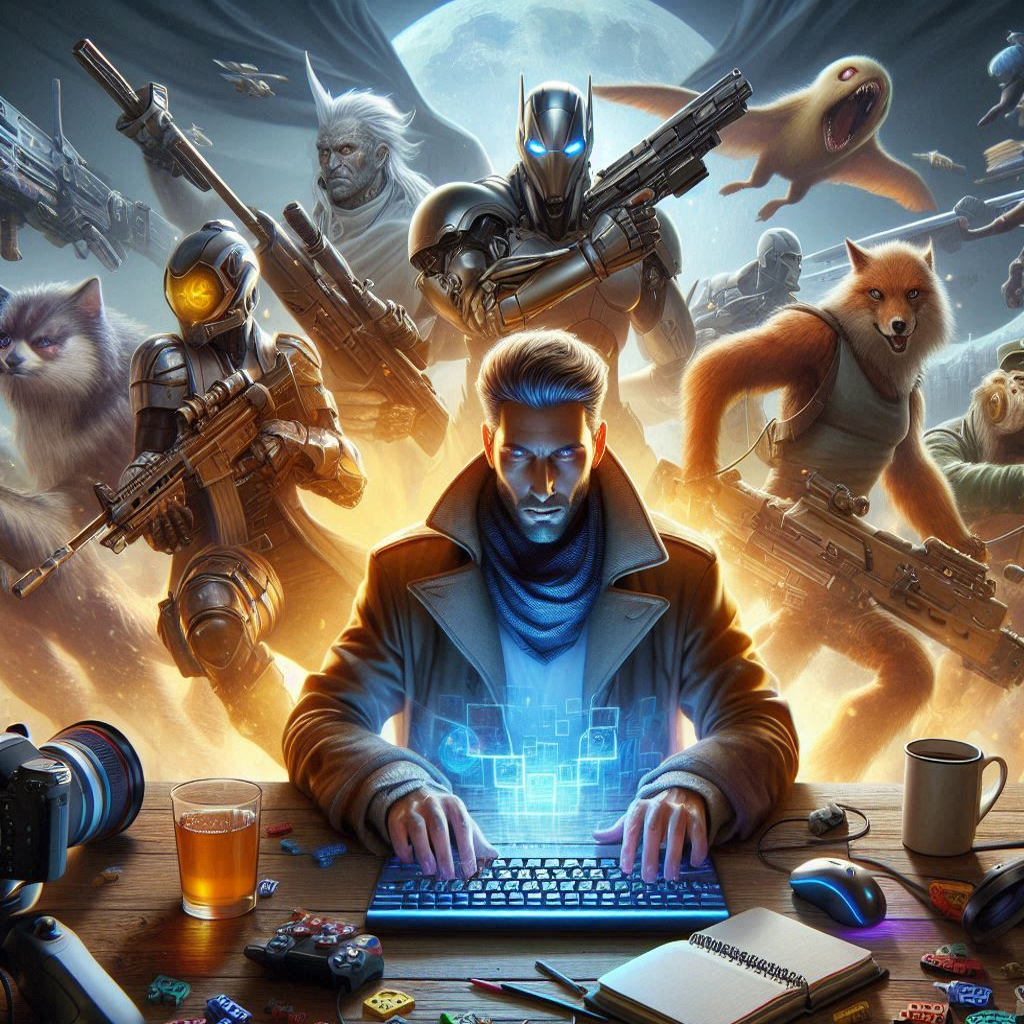Blizzard Entertainment is a well-known company that creates video games. They have made some popular games like “World of Warcraft,” “Overwatch,” and “Diablo.” But how did they become such a big name in the gaming world? Let’s find out!
Blizzard was founded in 1991 by three friends: Mike Morhaime, Allen Adham, and Frank Pearce. They started by making a game called “Warcraft.” This game was special because it let players build their own armies and fight against each other. People loved it, and this helped Blizzard grow.
One major reason for Blizzard’s success is their focus on making high-quality games. They take their time to ensure that the games are fun and work well. This care for quality is why people trust and love their games so much.
Another important part of their success is their community. Blizzard listens to the players and takes their feedback seriously. They often make changes to their games based on what players want, which keeps fans happy and engaged.
Blizzard also creates games that are easy to play but hard to master. This means that anyone can start playing, but there are always new challenges for experienced players. This hook helps keep everyone interested!
In summary, Blizzard became a leading force in the gaming industry by making high-quality games, listening to their community, and creating exciting gameplay. Their continued dedication to players makes them a favorite among gamers all over the world.
Glossary:
– Blizzard Entertainment: A video game company known for creating popular games.
– Game Quality: How well a game is made and how enjoyable it is to play.
– Community: A group of players that plays together and shares ideas about games.
– Feedback: Comments or suggestions from players to help improve a game.
– Gameplay: The way a game is played, including the rules and challenges.
How Blizzard Became a Leading Force in the Gaming Industry
Blizzard Entertainment is one of the most well-known names in the gaming world. Founded in 1991, Blizzard has created some of the most popular video games ever. This material explores how Blizzard achieved its success, the challenges it faced, and different solutions it implemented to maintain its position as a gaming giant.
The Early Days
- Founding and First Game: Blizzard was founded by three friends—Michael Morhaime, Allen Adham, and Frank Pearce. Their first game, Warcraft: Orcs & Humans, was released in 1994 and laid the groundwork for future successes.
- Innovative Gameplay: The game introduced real-time strategy elements that kept players engaged, helping Blizzard stand out from competitors.
Expansion of the Blizzard Universe
Following the success of Warcraft, Blizzard expanded its game lineup, which included:
- Diablo: A dark fantasy action RPG that captivated players with its addictive gameplay.
- StarCraft: A real-time strategy game that became hugely popular, especially in South Korea.
- World of Warcraft: Launched in 2004, it became a massive MMORPG (Massively Multiplayer Online Role-Playing Game) that attracted millions of players.
Staying Relevant Through Innovation
Blizzard’s ability to innovate has been crucial to its success. This includes:
- Constant Updates: Games like World of Warcraft are frequently updated with new content and expansions, which keeps players interested. One insightful comment about this comes from an industry expert: “Blizzard has a unique approach to maintaining player engagement through regular content updates.”
- Expanding into eSports: Blizzard recognized the growing popularity of competitive gaming. They organized tournaments for games like Overwatch and Heartstone, helping to build a strong eSports community.
Tackling Challenges
Despite its successes, Blizzard has faced challenges over the years:
- Criticism and Controversies: Blizzard has faced backlash over various decisions, including issues related to game monetization and player treatment. As one analyst noted: “Blizzard must navigate the fine line between profit and player satisfaction.”
- Competition: With the rise of other gaming companies, Blizzard has to constantly improve to stay ahead in the market.
Building a Strong Community
A significant factor in Blizzard’s success is its strong community of players. The company actively engages with its fans through:
| Social Media Interaction | Blizzard maintains an active presence on platforms like Twitter and Facebook, often sharing updates and engaging with fans. |
| Community Events | They host events like BlizzCon, where fans can meet developers and learn about upcoming games. |
Looking Ahead
Blizzard has managed to stay at the forefront of the gaming industry through innovation, community engagement, and adaptability. Its commitment to creating quality games and listening to its players will likely keep it a leading force for years to come. As stated by one gaming commentator: “Blizzard’s dedication to its fanbase is what sets it apart in the gaming industry.”
Q: What factors contributed to Blizzard becoming a leading force in the gaming industry?
A: Several factors played a crucial role in Blizzard’s rise, including their commitment to quality, innovation in gameplay, and strong storytelling. By focusing on crafting immersive worlds and compelling narratives, Blizzard has attracted a loyal fanbase over the years.
Q: How did Blizzard’s games set themselves apart from competitors?
A: Blizzard’s games are known for their polish, intuitive controls, and balance, making them both accessible to newcomers and appealing to seasoned gamers. The company invests heavily in testing and refining their titles, ensuring that they meet high standards before release.
Q: What role did community engagement play in Blizzard’s success?
A: Community engagement has been a cornerstone of Blizzard’s strategy. The company actively listens to player feedback and often incorporates it into updates and expansions. This fosters a strong sense of community and loyalty among players.
Q: How did the launch of World of Warcraft impact Blizzard’s reputation?
A: The launch of World of Warcraft in 2004 transformed Blizzard into a household name in gaming. The game’s revolutionary approach to multiplayer online experiences set new standards and attracted millions of players, greatly enhancing the company’s visibility and reputation.
Q: What innovations has Blizzard introduced in its game development?
A: Blizzard has consistently introduced innovative gameplay mechanics, such as the introduction of hero classes in Diablo III and the dynamic event system in World of Warcraft. These innovations keep gameplay fresh and engaging for players, contributing to long-term success.
Q: How does Blizzard maintain its brand identity amid industry changes?
A: Blizzard maintains its brand identity through a commitment to high-quality content, recognizable art styles, and iconic characters. The company also adheres to its core values of community, innovation, and excellence in game design, ensuring that each new release aligns with its established brand.
Q: What are some of Blizzard’s most successful franchises?
A: Some of Blizzard’s most successful franchises include Warcraft, StarCraft, Diablo, and Overwatch. Each of these franchises has not only achieved commercial success but has also left a significant impact on gaming culture and the industry as a whole.
Q: How does Blizzard approach game updates and expansions?
A: Blizzard takes a thoughtful approach to game updates and expansions, often introducing new content that enhances the overall gameplay experience. They prioritize player feedback and aim to balance new features with existing gameplay to maintain engagement and satisfaction.
Q: What challenges has Blizzard faced in recent years?
A: Blizzard has faced various challenges, including changes in leadership, controversies related to corporate decisions, and evolving player expectations. Despite these challenges, the company continues to adapt and strive for excellence in its gaming offerings.




